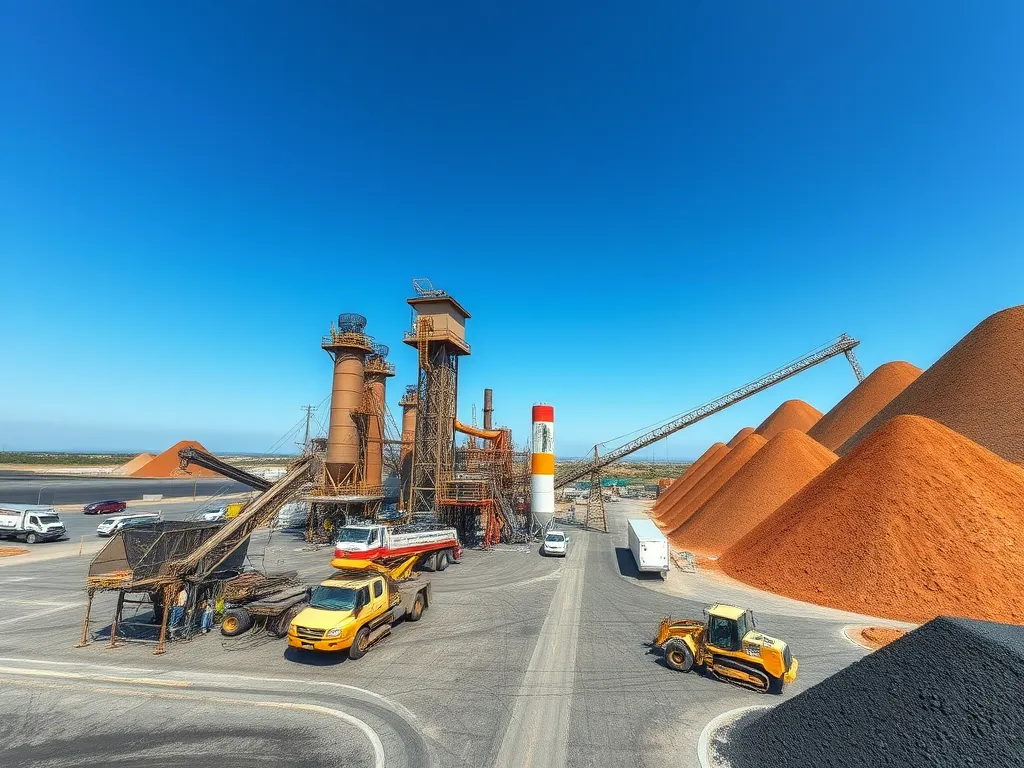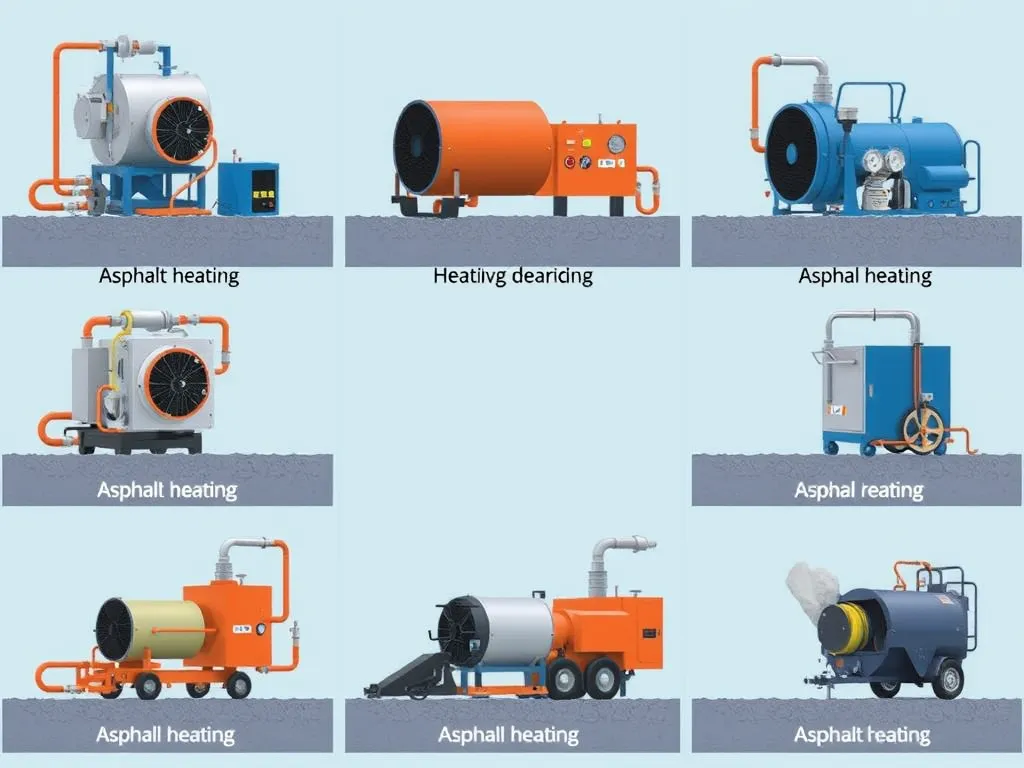Navigating Asphalt Supply Chain Challenges in 2023
Published on: August 6, 2025 | Last Updated: April 14, 2025
Written By: George Voss
Asphalt supply chain challenges in 2023 involve complex disruptions from raw material shortages to delivery delays. Refinery limitations cut bitumen supplies while rising fuel costs strain transportation networks. A 15% surge in demand from federal infrastructure projects collides with labor shortages and price spikes—liquid asphalt costs jumped 30% since 2022. These intersecting issues force contractors to rethink timelines and budgets.
This article breaks down 2023’s toughest asphalt supply hurdles. Explore how global bitumen markets impact local paving projects. Learn why trucking fleets struggle with diesel prices over $5/gallon. See how digital inventory systems prevent cold weather material waste. Get strategies for balancing just-in-time deliveries with stockpiling needs during seasonal rushes. Find industry responses to sustainability mandates adding $2–$5 per ton production costs.
Contents
- Key Challenges in the Asphalt Supply Chain (2023)
- Demand Pressures Amplifying Supply Chain Issues
- Logistics and Operational Obstacles
- Environmental and Regulatory Pressures
- Mitigation Strategies for Asphalt Supply Chain Problems
- FAQs: Addressing Common Asphalt Supply Concerns
- Closing Thoughts
- Useful References for You:
Key Challenges in the Asphalt Supply Chain (2023)
The asphalt supply chain faces unprecedented pressures in 2023. From material shortages to workforce gaps, these challenges impact project timelines and budgets nationwide.
Raw Material Constraints and Shortages
Access to core materials defines asphalt production capacity. Supply chain managers now navigate tight markets for critical components.
Asphalt Short Supply Due to Refinery Limitations
U.S. refineries produce 80% of paving-grade asphalt. Many prioritize diesel and gasoline over asphalt during maintenance cycles or outages. This reduces annual asphalt output by 12-15% during peak construction months. Plants face 3-5 week delays securing PG 64-22 binders for highway projects.
Bitumen Availability and Global Market Pressures
Global bitumen prices jumped 22% year-over-year due to EU sanctions on Russian imports. U.S. suppliers now compete with European buyers for Venezuelan and Canadian heavy crude derivatives. Limited storage capacity (most plants hold ≤7-day reserves) magnifies spot-market vulnerabilities.
Transportation and Delivery Bottlenecks
Moving hot-mix asphalt requires precision timing. Delivery windows shrink as logistical hurdles multiply.
Rising Fuel Costs Impacting Asphalt Logistics
Diesel prices surged 45% from 2021-2023. A standard asphalt truck now spends $238 more per load on fuel compared to 2020 rates. This forces carriers to add 15-20% fuel surcharges, inflating project costs.
Fleet Management and Road Restriction Delays
Weight limits on thawing roads reduce truck payloads by 30% during spring. Permitting backlogs add 8-12 days to regional hauls. Only 62% of asphalt shipments arrived within contract windows in Q2 2023.
Labor Shortages Across Production and Delivery
The industry needs 23,000 new workers annually but gains only 14,000. Vacancies ripple through operations.
Skilled Workforce Gaps in Asphalt Plants
42% of plant operators will retire by 2028. Training replacements takes 18-24 months. Automated systems require technicians who command 25% higher wages than traditional roles.
Inspector Availability Delaying Project Timelines
DOTs report 37% fewer quality control inspectors than needed. Projects wait 11 days on average for density tests or mix approval. Some states allow contractor self-testing, but liability risks increase.
Production Scheduling and Cost Volatility
Balancing supply with unpredictable demand strains planning systems.
Coordinating Asphalt Supply with Seasonal Demand
Plants typically stockpile 1.2M tons pre-season. Early 2023 price spikes caused 60% of producers to reduce inventories. Just-in-time deliveries now cover 73% of orders, risking weather-related shutdowns.
Price Fluctuations in Liquid Asphalt and Aggregates
Liquid asphalt cement costs $610/ton in 2023 vs. $485 in 2021. Crushed stone jumped 18% due to mine permitting delays. Contracts with <5% price escalation clauses become unsustainable.
These operational hurdles intersect with surging infrastructure demands. Next, we examine how the $1.2T federal bill strains an already fragile supply network.
Demand Pressures Amplifying Supply Chain Issues
Rising needs for asphalt clash with strained systems. High demand now drives key asphalt supply chain challenges. Projects race to secure materials as stockpiles shrink.
Infrastructure Projects Driving Asphalt Shortages
The $110 billion U.S. Infrastructure Investment and Jobs Act (IIJA) fuels asphalt short supply. Road crews need 15% more asphalt mix than 2022. Cities repair bridges while states widen highways. This surge strains plants already hit by refinery cuts.
Bitumen faces dual demand. Roofing firms use 20% of global supply. Plastics makers now seek it for glue bases. Road builders compete with these sectors for each barrel. Spot prices jumped $8/ton since March 2023.
Balancing Just-in-time Delivery With Stockpiling Needs
Hot plants rely on tight schedules. Most asphalt must stay above 300°F until paving. Just-in-time (JIT) systems save fuel costs but risk delays. A single late truck can halt a 10-person crew.
Stockpiling eases asphalt supply chain delays. Yet storing hot mix costs $1.50/ton daily. Cold storage needs PG binder additives – adding $12/ton. Some states now blend recycled asphalt (RAP) to stretch stocks. Over 40% of plants use smart stockpile tech to track temps and age.
Summer heat waves add risks. Piles over 160°F lose grade quality in 72 hours. Winter freezes damage 5% of stored asphalt. Teams juggle weather apps and delivery apps to time loads.
These demand spikes and storage traps set the stage for deeper logistics hurdles. Next, we break down how transport snarls and route limits hit asphalt supplies.

Logistics and Operational Obstacles
Supply chain snags hit hard when moving asphalt from plants to job sites. Delays pile up due to route issues, gear limits, and harsh weather. These hurdles push costs up 12-18% in 2023 alone.
Inefficiencies in Regional Sourcing Strategies
Local gravel pits and refineries can’t always meet demand spikes. Plants in Texas faced 30-day waits for lime rock during road work season. Relying on single quarries risks halts if rail lines clog or mines flood. Smart teams now mix local buys with imports from 3+ states to cut wait times.
Cold Weather Impact on Asphalt Storage &Amp; Application
Mix temps below 275°F cause clumps in silos. Winter stockpiles shrink 40% as plants battle to keep binders warm. Paving crews lose 2-3 hours daily reheating loads that cooled below 225°F – the min pour temp for solid roads.
Material Damage from Temperature Extremes
Freeze-thaw cycles crack stored asphalt within weeks. Hot-cold swings split binder layers, creating waste chunks. Plants in Maine reported 15% loss last winter from thermal cracks. Insulated tanks and heated pads help, but add $8-$12 per ton in fuel costs.
Fixing these roadblocks needs tech upgrades and flexible plans. Next, green rules add fresh tests for the asphalt supply chain.
Also See: Asphalt Cost by State: Compare Prices
Environmental and Regulatory Pressures
Shifts in policy and public priorities now shape how asphalt firms source materials, run plants, and track outputs. New rules add layers of complexity to an already tight supply chain.
Sustainability Requirements in Asphalt Production
Mandates for recycled content push plants to use 20-35% RAP (Recycled Asphalt Pavement). Sourcing quality RAP demands partnerships with demolition crews and added sorting steps. Warm Mix Asphalt (WMA) tech cuts production temps by 50°F but needs costly foaming kits or chemical additives. Plants without WMA face penalties under FHWA’s MAP-21 rules, slowing project bids.
| Requirement | Impact on Supply Chain |
|---|---|
| 30% RAP Usage | +15% prep time for material testing |
| WMA Adoption | $80K-$120K per plant for retrofits |
| Low-Carbon Binders | 4-6 week lead times for PG 58-28 asphalt |
Climate-labeling Compliance Costs
New climate-labeling systems force firms to report carbon output per ton of asphalt. Third-party audits add $5K-$8K per project. Tracking software for Scope 3 emissions (transport, aggregates) runs $15K annually. Delays happen when plants can’t verify data fast enough for state DOT approvals.
States like California now require 20% lower GHG in pavement mixes by 2025. Meeting this means swapping 10-15% bitumen with pricier bio-binders ($145/ton vs $90/ton). Limited suppliers for these alternatives create bottlenecks during peak seasons.
Firms balancing these demands now face a critical choice: absorb rising costs or risk losing bids. Up next – tactical fixes to keep projects moving amid asphalt supply chain challenges 2023.

Mitigation Strategies for Asphalt Supply Chain Problems
Optimizing Supplier Relationships
Building strong partnerships with material providers forms a foundation for managing asphalt supply chain delays. Proactive communication and long-term contracts stabilize pricing during bitumen shortages.
Diversifying Aggregate Source Networks
Limiting reliance on a single quarry prevents full shutdowns during local supply shortages in asphalt. Mixing 20mm crushed stone from regional pits with slag or recycled materials maintains mix designs without compromising PG 64-22 binder specs.
Implementing Real-Time Supply Tracking Systems
GPS-linked fleet monitoring and RFID tags on liquid asphalt tankers cut wait times at plants by 18%. Cloud platforms like SAP Track and Trace give visibility into stock levels, flagging shortages before hot-mix batches stall.
Enhancing Operational Resilience
Adapting workflows to asphalt supply constraints requires both tech upgrades and flexibility. Plants running at 85% capacity buffer against sudden bitumen price hikes or trucking gaps.
Adopting Digital Inventory Management Tools
AI-driven tools predict stock needs using historical data and weather patterns. Oracle’s Smart Construction Platform cut waste by 12% for Arizona contractors during 2023 asphalt short supply periods.
Revising Construction Schedules Around Material Availability
Shifting paving to off-peak months avoids bidding wars when asphalt shortages hit. Night shifts using warm-mix additives (135°C vs traditional 150°C) stretch limited supplies across more lane miles.
Collaborative Industry Approaches
Joint action across suppliers, contractors, and DOTs tackles systemic asphalt supply chain problems. Data-sharing pacts and pooled buying power smooth regional imbalances.
Shared Resource Pooling During Supply Crises
Multi-firm asphalt sharing agreements in Texas during 2022 shortages kept 14 highway projects on track. Mobile batch plants served clusters of sites, cutting trucking needs by 40%.
Standardized Quality Control Protocols
Aligning testing methods (ASTM D8/D3666) for aggregates and binders prevents rejections that worsen supply shortages. Central labs with robotic Marshall testers process 200 samples/day vs manual 50.
As industries adapt to asphalt supply chain challenges 2023, new questions arise about lasting fixes. Upcoming analysis digs into which tactics show staying power amid shifting climate rules and infrastructure bills.
FAQs: Addressing Common Asphalt Supply Concerns
What Causes Most Asphalt Supply Chain Disruptions?
Asphalt supply chain disruptions are primarily caused by a combination of raw material shortages, increased demand from infrastructure projects, and logistical challenges in transportation. Factors such as labor shortages, operational inefficiencies, and environmental regulations also exacerbate these issues.
How Does High Demand Exacerbate Asphalt Shortages?
High demand amplifies asphalt shortages as more construction projects compete for limited resources, particularly during peak seasons. Federal initiatives, like the Infrastructure Investment and Jobs Act, increase competition for materials, leaving contractors struggling to secure sufficient asphalt supplies.
What Environmental Factors Damage Asphalt Quality?
Environmental factors such as extreme temperatures can critically impact asphalt quality. For instance, cold weather can cause materials to clump and lose integrity, while heat can lead to degradation if not stored properly. Both conditions can result in waste and additional costs during production and application.
Why Do Transportation Issues Persist in Asphalt Logistics?
Transportation issues persist in asphalt logistics due to rising fuel costs, road restrictions, and insufficient fleet management. Factors like weight limits on thawing roads and permitting delays further complicate timely deliveries, impacting the overall efficiency of the supply chain.

Closing Thoughts
Navigating the complexities of asphalt supply chain challenges in 2023 requires a multifaceted approach. From raw material shortages and transportation bottlenecks to labor gaps, each issue compounds the difficulty of meeting demand. Infrastructure projects are driving this need, making it imperative for industry stakeholders to adapt quickly.
Implementing strategic solutions such as optimizing supplier relationships, enhancing operational resilience, and fostering collaboration can mitigate many of these challenges. Staying informed about market trends and logistics can equip businesses to better handle evolving conditions.
For further insights into managing asphalt supply chain complexities and more tools to assist in your projects, visit Asphalt Calculator USA.
Useful References for You:
- ASTM International (Asphalt & Pavement Standards)
- Supply chain issues with asphalt cause construction delays | 9news.com
- Asphalt Additives Market Size, Impacted by COVID-19, to Reach US$ 3.7 Billion in 2026, Says Stratview Research
- 5 Key Issues Facing the Asphalt Industry | For Construction Pros
- 2021 — What challenges will the asphalt industry face?


